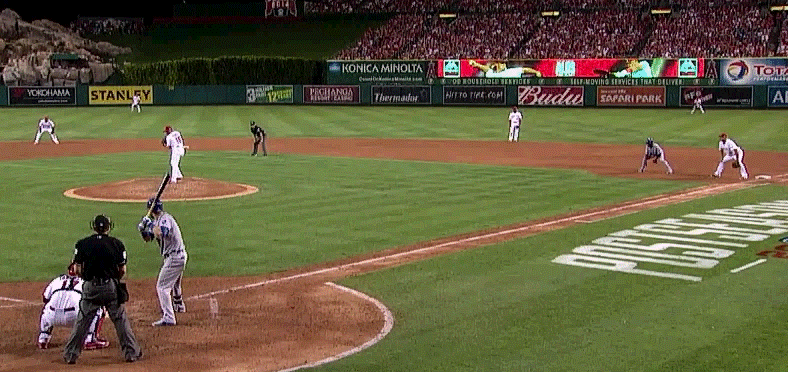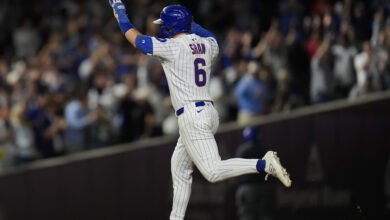
Baseball Needs to Replace Center-Field Camera Angle with Backstop View
Baseball is listening to me. In November I proposed three improvements to the game, two of which have made it to testing phase this season. In late February, MLB announced that robotic strike zones would be tested in the Atlantic league. And they’ve recently begun testing a system that allows catchers to electronically signal pitch types and locations. I think it is safe to say Commissioner Manfred is a regular reader of mine.
Yet the most exciting news I saw relating to my old proposals was the Ump Cam on display during a Mariners exhibition game in Japan this week. I advocated for a backstop-based camera system before ever joining Cubs Insider, so it is gratifying to know there is movement in this direction. A replacement of the center-field shot as MLB’s default camera angle is long overdue.
So assuming someone at the league office is listening, this is where you can start taking notes.

This is a screenshot of a modern HD baseball broadcast. Notice how the center-field angle wastes nearly two-thirds of the screen. Nothing of interest is going to happen outside the yellow lines. This is because while the portion between the lines filled a 1950’s-era TV, it has not scaled with the times. HD televisions have more digital real estate that MLB is letting go to seed.
The best solution is to reverse the shot. If the game is shot from the backstop, as shown in this GIF, lots of useful things fill the outer thirds of the frame.

Notice that the backstop angle still has the pitcher and batter as the focus of the frame. But all the previously “wasted” space is now showing other players instead. In this single shot we see 1) the pitcher, 2) the batter, 3) the ump, 4) the runners at first and second, and 5) all three infielders. We also get to see the entire play, from pitch to out, uninterrupted. When the ball is hit, the broadcast does not instantly switch to a different camera angle, but instead follows the batted ball, and subsequent play, with a simple zoom.
The backstop angle is superior to the current default for a variety of reasons. For one, it shows infield shifts, which are the most noticeable visual change in day-to-day baseball over the past five years. Yet today’s television viewer never sees the shift because the center-field shot is not able to capture all the infielders. By contrast, the backstop shot allows the viewer to see the shift in real time.
The backstop shot also captures the running game far better. Current broadcasts switch rapidly between three camera angles during a steal of second, as shown below. This results in a disjointed viewing experience.

Compare that to this view from behind the plate that shows the entire play unfold in a single camera shot.

In the backstop angle, the runner and his lead are visible to the side of the pitcher. When the runner takes off, we still get to see the pitch without cutting away. Finally, the camera is already in the proper angle for the tag at second with a simple zoom. Groundballs and double plays likewise flow more smoothly using this camera angle. There is no excuse for not using the backstop angle more often.
To be sure, the backstop angle needs improvement to work as a regular shot for every pitch. It needs to be brought closer than we’ve seen in the past so we can better see the strike zone and the pitch location. While the Japanese ump cam is one potential solution, I would rather see the umpire replaced with a robotic strike zone, thus allowing a camera mounted on the backstop to have an unimpeded view straight over the catchers head toward the mound.
And please note that I am not advocating eliminating the old center-field shot entirely. It still has a place among the various camera angles used in a broadcast and would remain a great angle for replays on borderline pitches or big hits. Instead, I am suggesting that TV broadcasts start phasing in the backstop view over several seasons, gradually increasing its usage each year, until it eventually becomes the default camera angle. It makes watching baseball more visually interesting and engaging.

